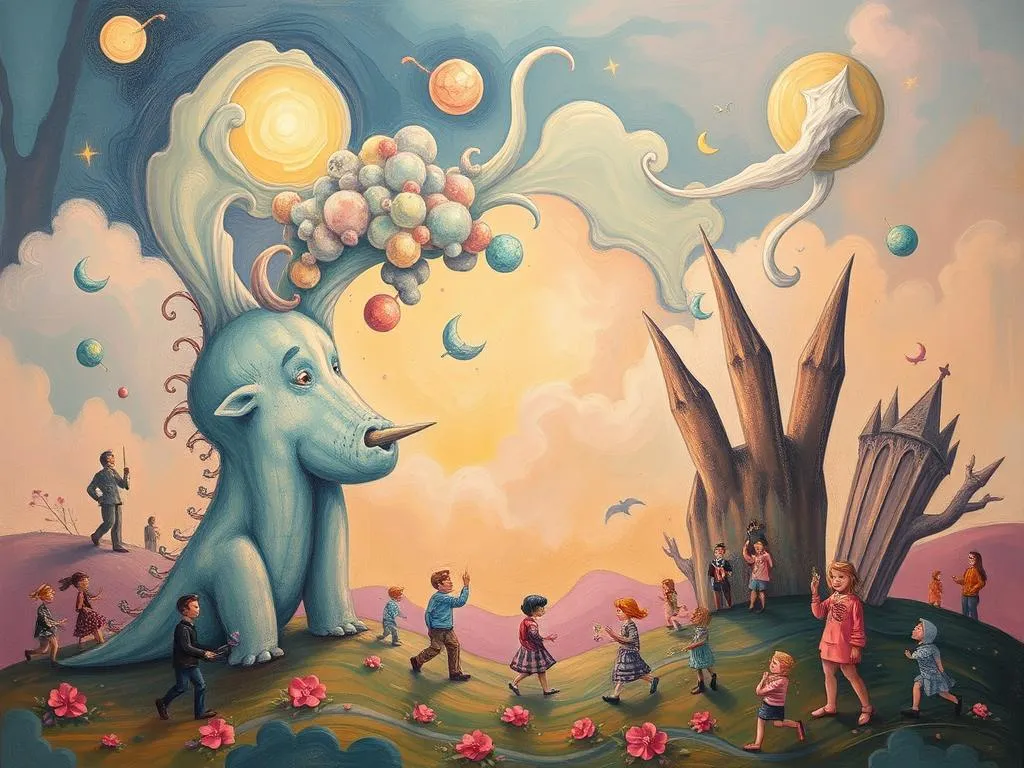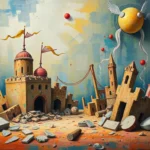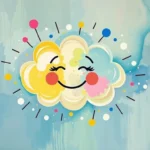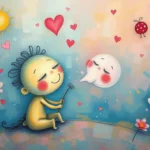
Dreams have always held a unique place in human experience, serving as the canvas where our subconscious paints vivid images, emotions, and narratives. Among the myriad of dreams people encounter, dreams involving mad people—often characterized by irrational behavior, chaos, or unusual scenarios—stand out for their intensity and complexity. The fascination with such dreams lies not only in their bizarre nature but also in their potential to unveil hidden aspects of our psyche. Understanding these dreams can provide profound insights into our emotional states, fears, and desires, making them an intriguing subject of exploration.
Symbolism and Meaning
When delving into the symbolism behind dreams of mad people, it is essential to recognize that madness often embodies a break from societal norms and expectations. Those who appear mad in dreams may symbolize various aspects of the dreamer’s life, including repressed emotions, unacknowledged fears, or unresolved conflicts. The mad person can represent the parts of ourselves we deem unacceptable or irrational, reflecting our struggles with identity, control, and understanding.
One common symbol in these dreams is chaos. The presence of chaotic figures often signifies the dreamer’s internal turmoil. This chaos can manifest as anxiety, stress, or confusion in waking life. Dreaming of mad people may indicate that the dreamer feels overwhelmed by circumstances beyond their control. Alternatively, it might suggest a yearning for freedom from societal pressures, where the mad person’s disregard for convention represents a desire to break free from constraints.
Another prevalent symbol is the mirror. Mad individuals in dreams can serve as mirrors reflecting the dreamer’s insecurities or fears. They may prompt the dreamer to confront aspects of themselves that they have long ignored. This encounter can be unsettling, yet it provides an opportunity for self-discovery. By observing the mad person’s behavior, the dreamer might recognize similar traits or emotions within themselves, urging them to acknowledge and integrate these aspects into their conscious life.
From another perspective, dreams of mad people can also signify a call for creativity. Madness is often associated with unconventional thought and artistic expression. In this context, the mad figure may represent the dreamer’s creative potential lying dormant, urging them to explore new ideas or express themselves in ways that defy societal expectations. This interpretation highlights the dual nature of madness in dreams—both as a source of fear and as a potential catalyst for personal growth.
Key Scenarios and Variations
Dreams of mad people can take many forms, with each scenario bringing forth distinct interpretations. For instance, dreaming of a mad person pursuing you can evoke feelings of fear and anxiety. This scenario may suggest that the dreamer is running away from unresolved issues or emotions they find difficult to confront. The mad person’s relentless pursuit symbolizes the inevitability of facing these challenges, urging the dreamer to address their fears rather than evade them.
In contrast, a dream where the dreamer engages in a conversation with a mad person can unveil a different layer of meaning. Here, the interaction might signify a dialogue with the unconscious mind. The mad person’s irrational thoughts could represent the dreamer’s suppressed ideas or feelings seeking expression. This scenario can serve as a reminder to listen to one’s inner voice, as it may hold valuable insights that have been overlooked in the waking world.
Another variation involves dreams where the dreamer becomes mad themselves. This can be profoundly unsettling but provides a unique opportunity for introspection. Such dreams may indicate a feeling of losing control over one’s life or an internal struggle with one’s sense of reality. Alternatively, it can signify a rebellion against conformity, suggesting that the dreamer is ready to embrace their authentic self, regardless of societal expectations. The experience of madness in the dream can serve as a powerful metaphor for personal liberation and self-acceptance.
The setting of the dream also plays a crucial role in shaping its meaning. For instance, a dream set in a chaotic environment, such as a crowded street filled with mad people, may amplify feelings of anxiety and overwhelm. Conversely, a serene setting juxtaposed with a mad person can highlight the dreamer’s inner conflict, revealing a stark contrast between their external calm and internal chaos. Understanding the context and atmosphere of the dream enhances the interpretation and provides deeper insights into the dreamer’s emotional landscape.
Real-Life Connections and Takeaways
Connecting dreams of mad people to real-life situations can be a transformative exercise in self-reflection. These dreams often serve as catalysts for change, urging us to confront our fears and embrace our true selves. To make sense of these dreams, readers are encouraged to consider their current emotional state. Are there unresolved conflicts or repressed emotions that need addressing? Reflecting on this can illuminate patterns in waking life that resonate with the themes present in the dream.
Practically, it can be beneficial to maintain a dream journal. Recording dreams upon waking allows the dreamer to capture fleeting details that may otherwise fade with the day’s distractions. Over time, patterns may emerge, revealing recurring themes or symbols in dreams involving mad people. This practice not only aids in understanding one’s dreams but can also serve as a tool for personal growth and emotional processing.
Readers should also consider engaging in mindfulness practices to explore feelings of chaos or madness in their waking life. Meditation, for instance, can help ground oneself amidst overwhelming emotions. Engaging with creativity—whether through art, writing, or music—can also provide an outlet for exploring the themes of madness, allowing individuals to express feelings that may otherwise remain bottled up.
Lastly, it is essential to approach these dreams with compassion and curiosity. Instead of fearing the madness represented in these dreams, embracing it can lead to profound insights. Reflecting on what the mad figures in dreams might represent in one’s life can create a deeper understanding of the self. This exploration can foster personal growth and lead to a more authentic existence, free from the constraints of societal expectations.
In conclusion, dreams of mad people offer a rich tapestry of symbolism and meaning that invites exploration and introspection. By engaging with these dreams, individuals can uncover hidden truths about their emotional states, confront fears, and embrace their creativity. Ultimately, these dreams remind us that within the chaos lies the potential for transformation and self-discovery. Embracing the madness can lead to profound insights, allowing us to integrate the many facets of our being into a more harmonious existence. Reflect on your own dreams and consider what truths they may unveil about your life and self.







